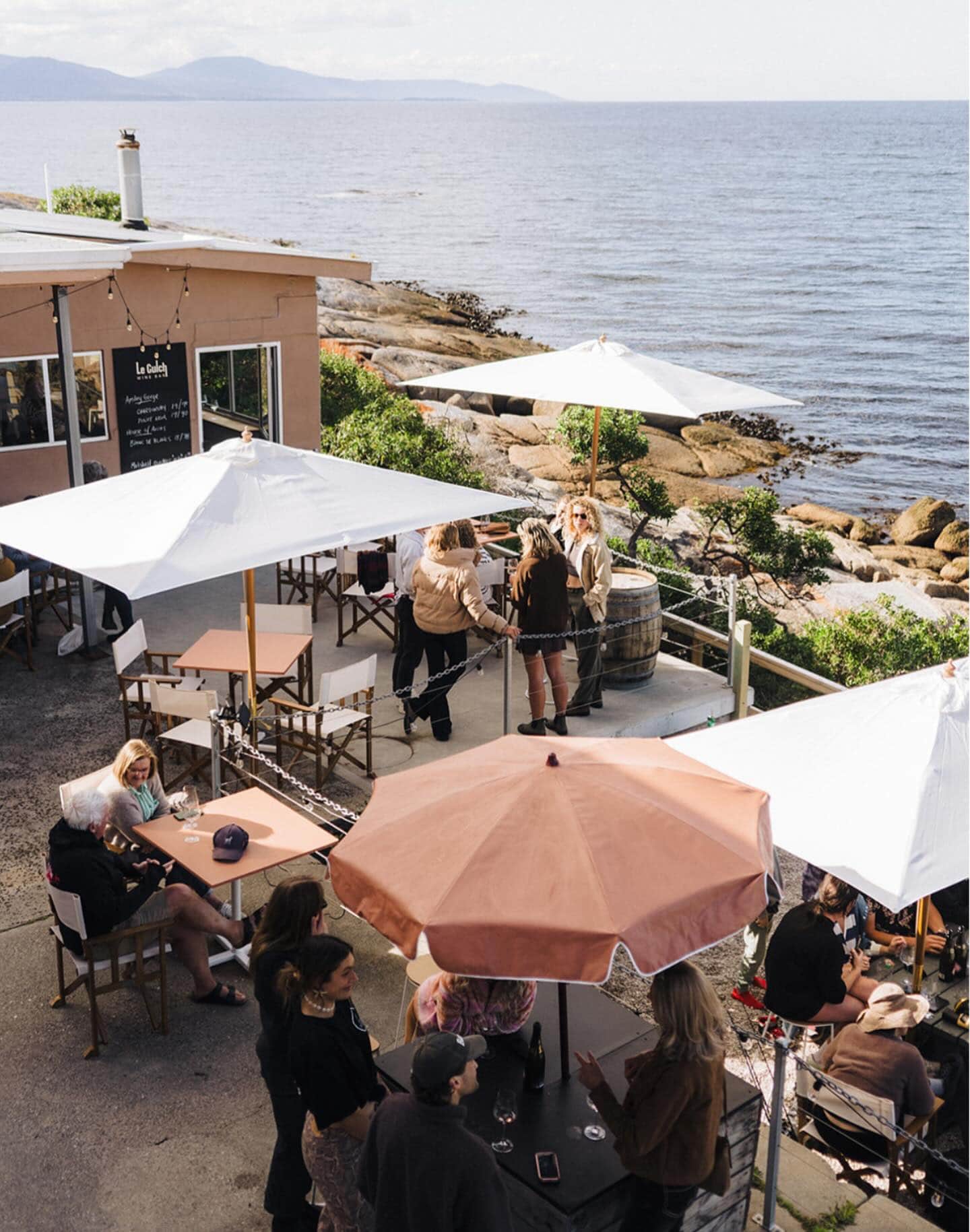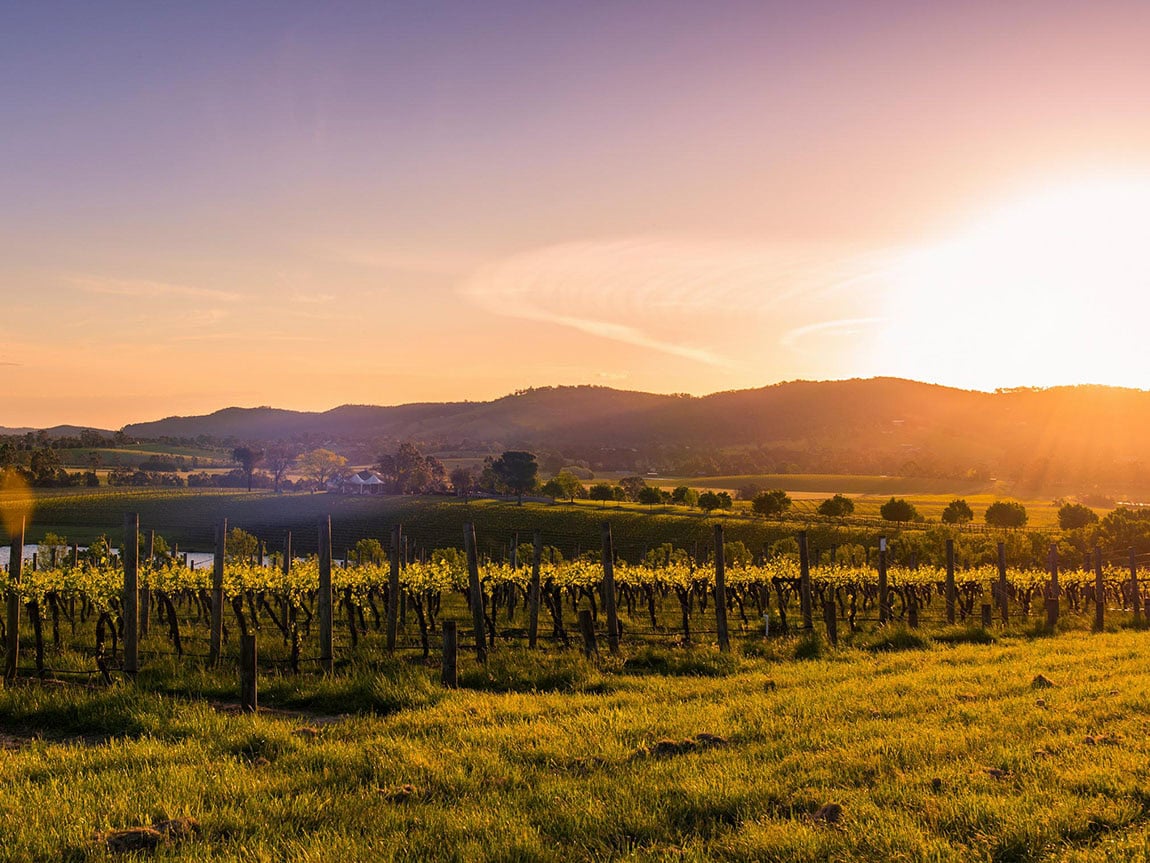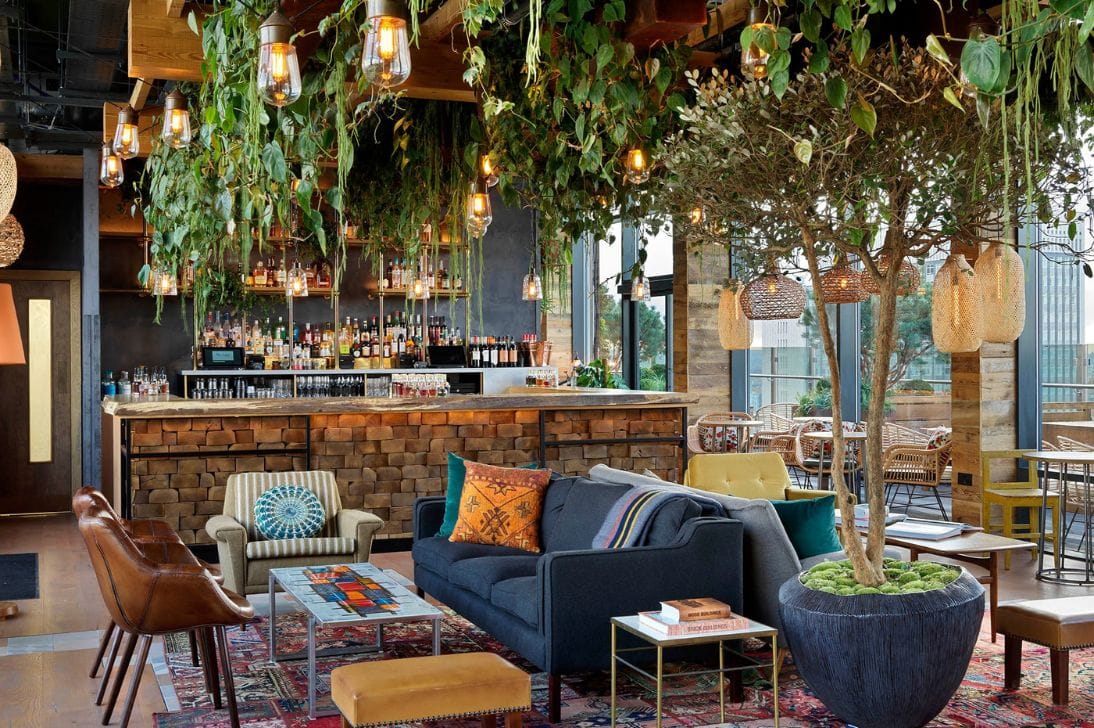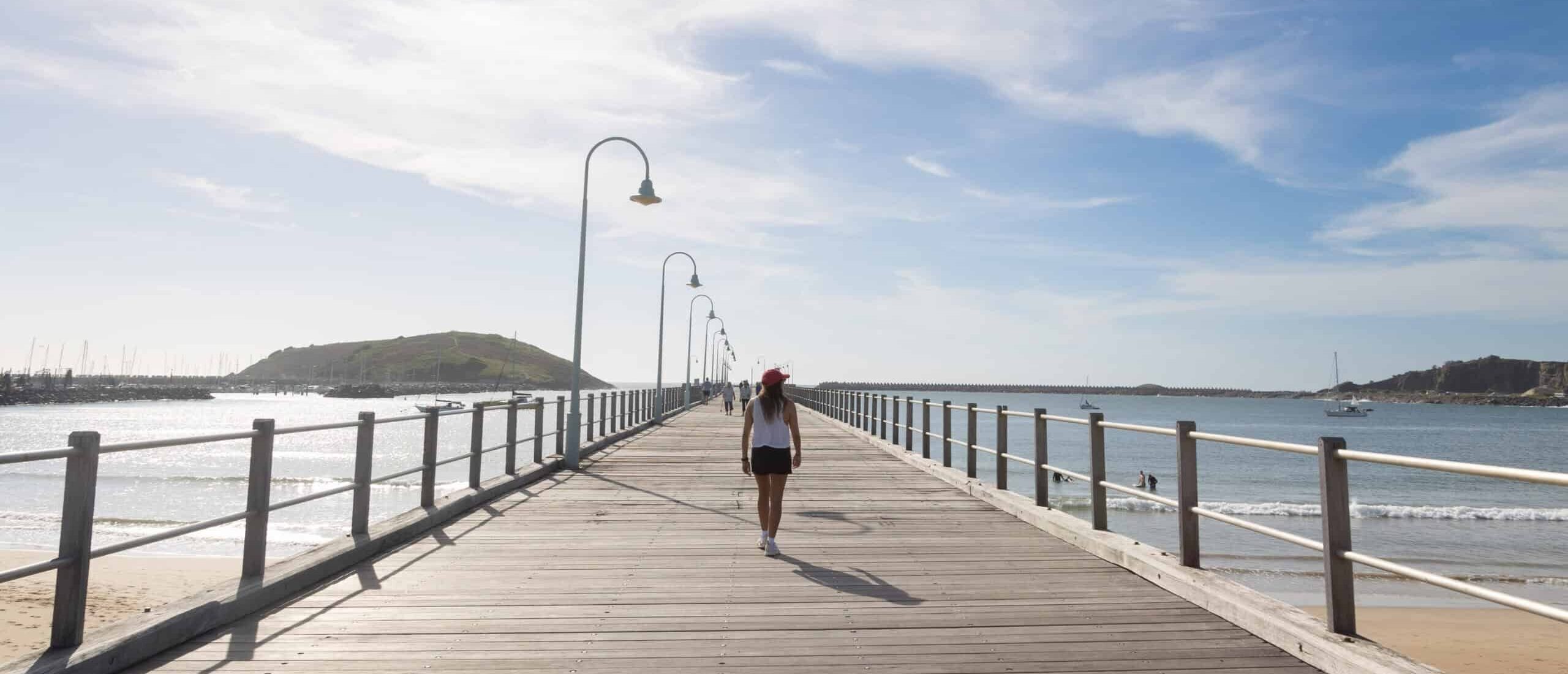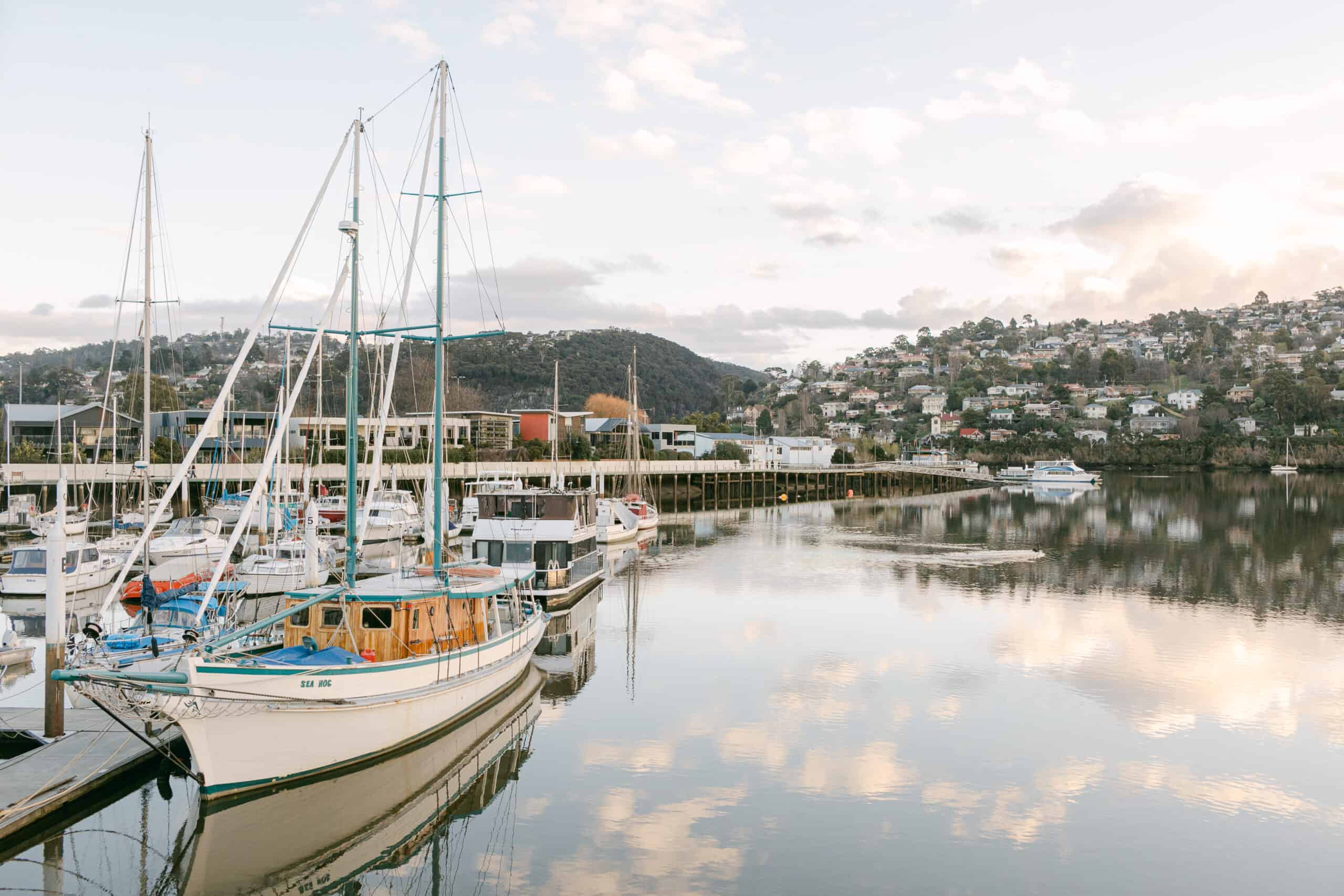Add This Maria Island Day Trip to Your Travel List
A visit to this wildlife wonderland is a must for any Tassie explorer. Here are the best things to do in Maria Island.
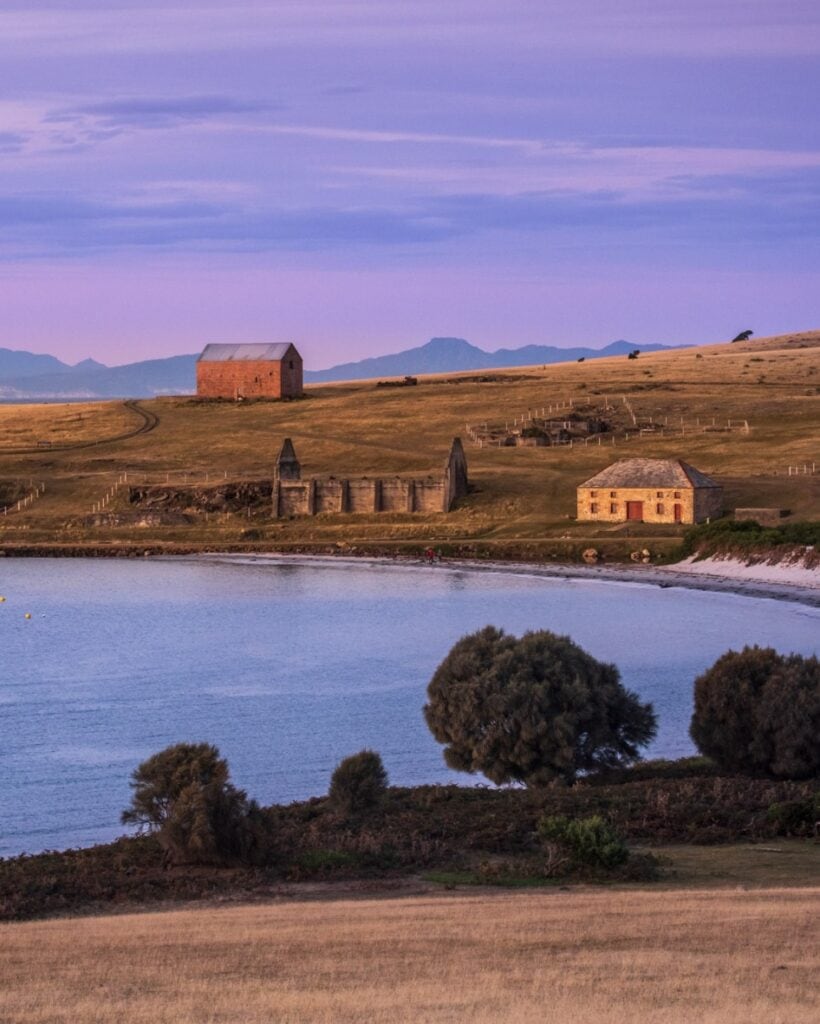
Maria, pronounced like the singer, is an island where illusions take form. Just half an hour across Mercury Passage from Triabunna, the mainland slips away — roads give way to sandy tracks, seabirds trace the ferry’s wake, and Bishop & Clerk rise on the horizon like stone sentinels. Close enough for a day trip, Maria Island somehow folds wilderness, history and quiet magic into a world far removed from the everyday.
Here, the rhythm is yours to choose. You might walk a gentle loop to see sandstone cliffs brushed with natural ochre, or tackle the climb to a dolerite peak. You might cycle the car-free roads, past open fields and pale beaches, stopping whenever wildlife crosses your path. Wombats, wallabies, and geese wander freely, as much a part of the landscape as the cliffs and forests.
Ready to slip into Maria’s spell? This is your guide to the island’s essential experiences — walks, swims, and encounters you’ll carry home long after the salt has dried from your skin.
If you’re taking on Maria Island as a day trip, it pays to rise early. Encounter Maria Island runs the ferry from Triabunna, and in summer the first boat leaves at 8:30am; in winter, 10:00am. The last ferry back departs at 4:15pm, giving you a generous window to wander, climb, swim and still find time to pause along the way. The crossing takes about thirty minutes. Fares sit at $54 for adults and $33 for children, and you can bring a bike for $15.50 or hire one once you arrive.
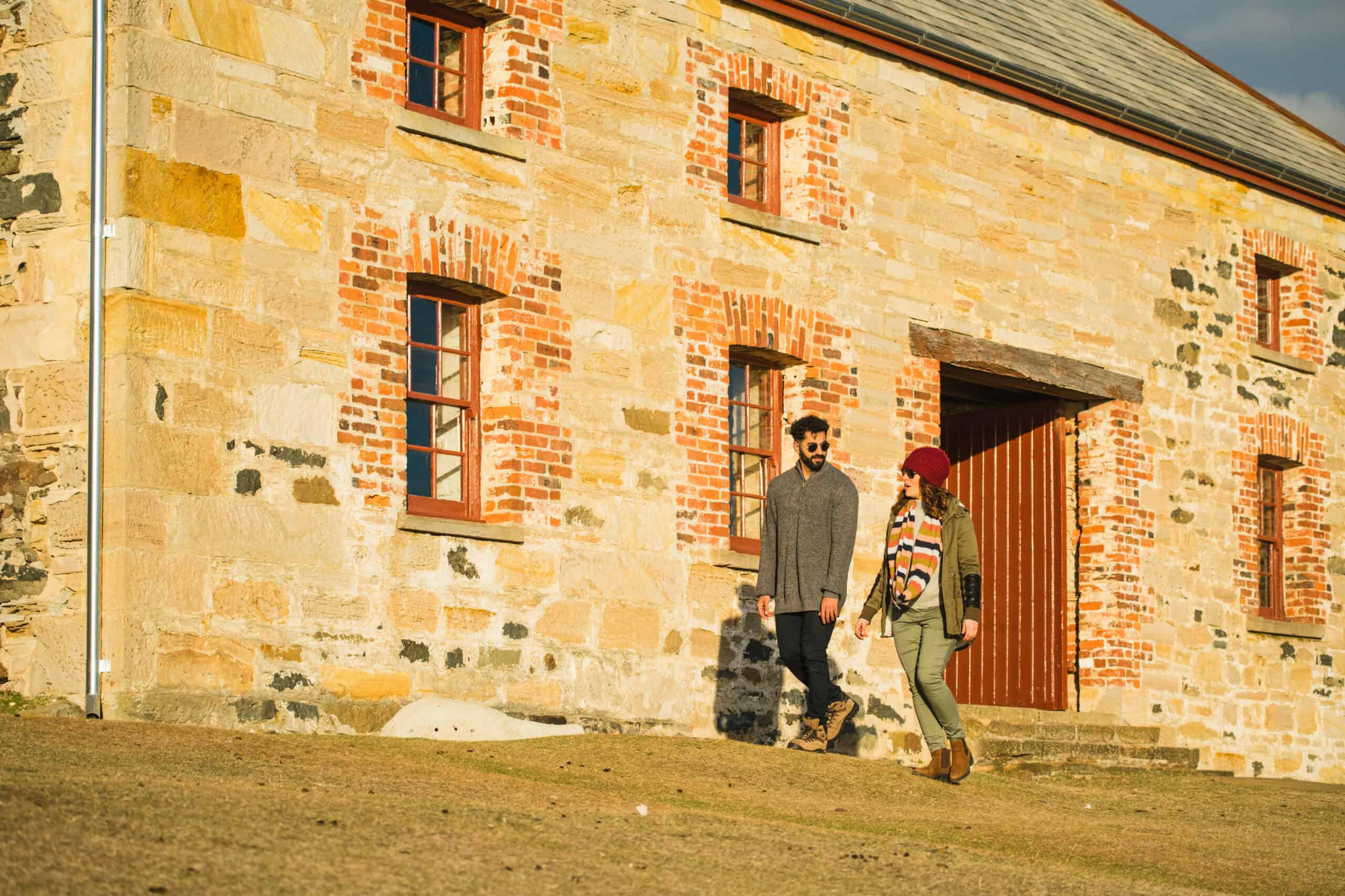
Arriving at Darlington, you step first into history. The Commissariat Store, once a convict granary, now dispenses maps, tide charts and tales of the island’s past. Beyond it lie the cottages and cellblocks of the World Heritage probation station, a grid of sandstone and timber set against the sea. Every doorway whispers of convicts and colonists, of ambitions raised and undone. Beneath it all is a deeper story still: this island, known in palawa kani as wukaluwikiwayna, belonged to the Puthikwilayti people of the Oyster Bay nation for tens of thousands of years before ships redrew its fate.
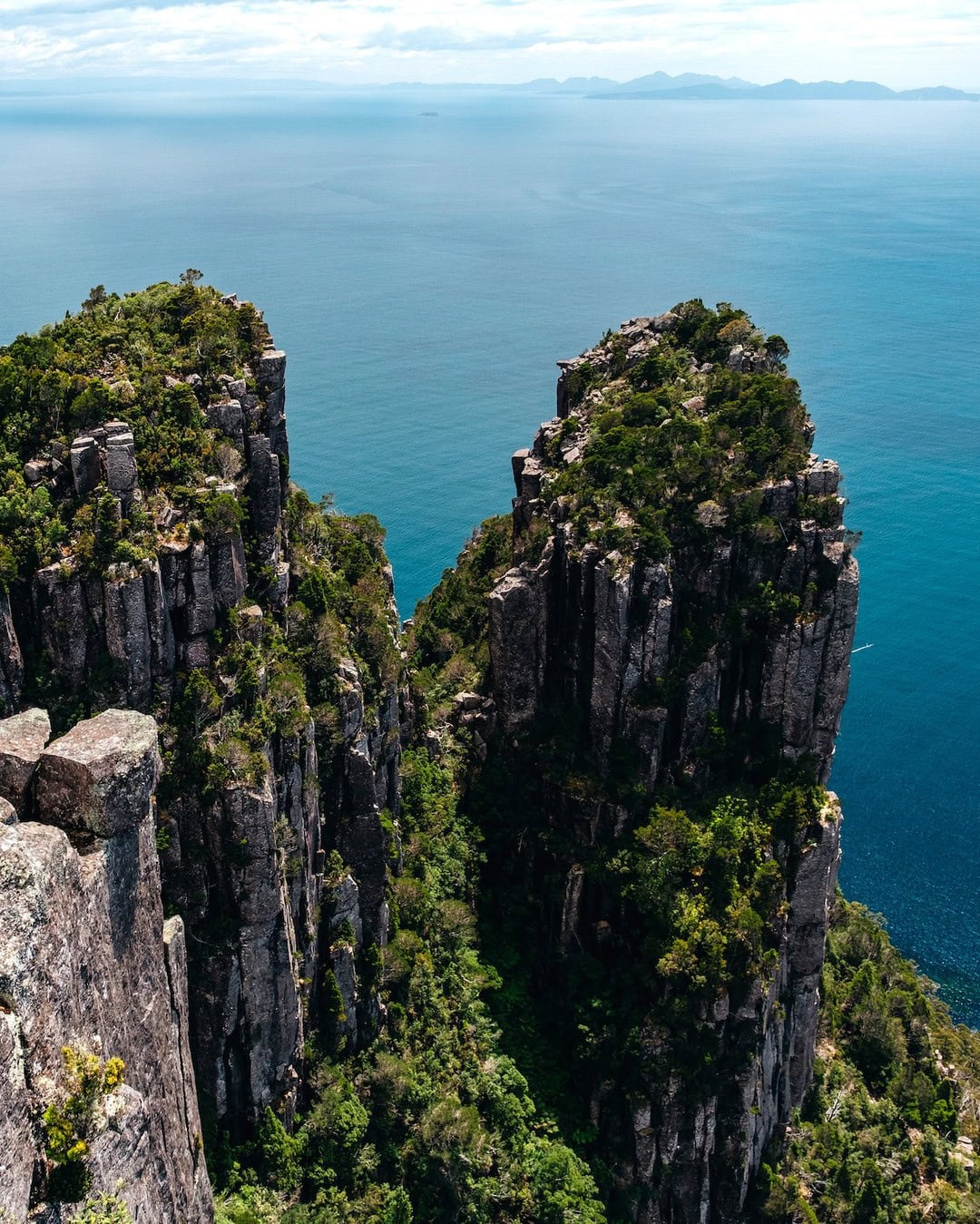
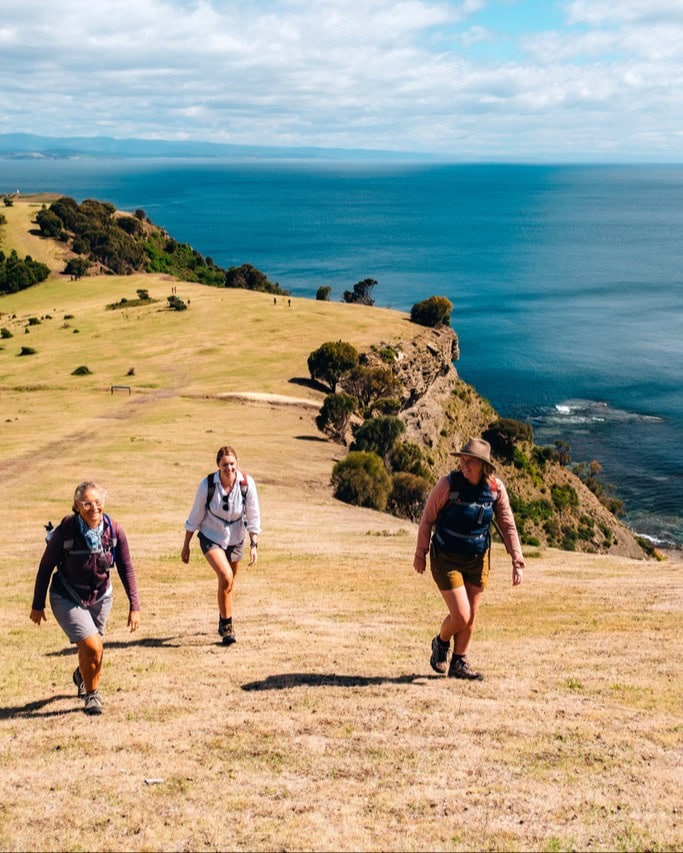
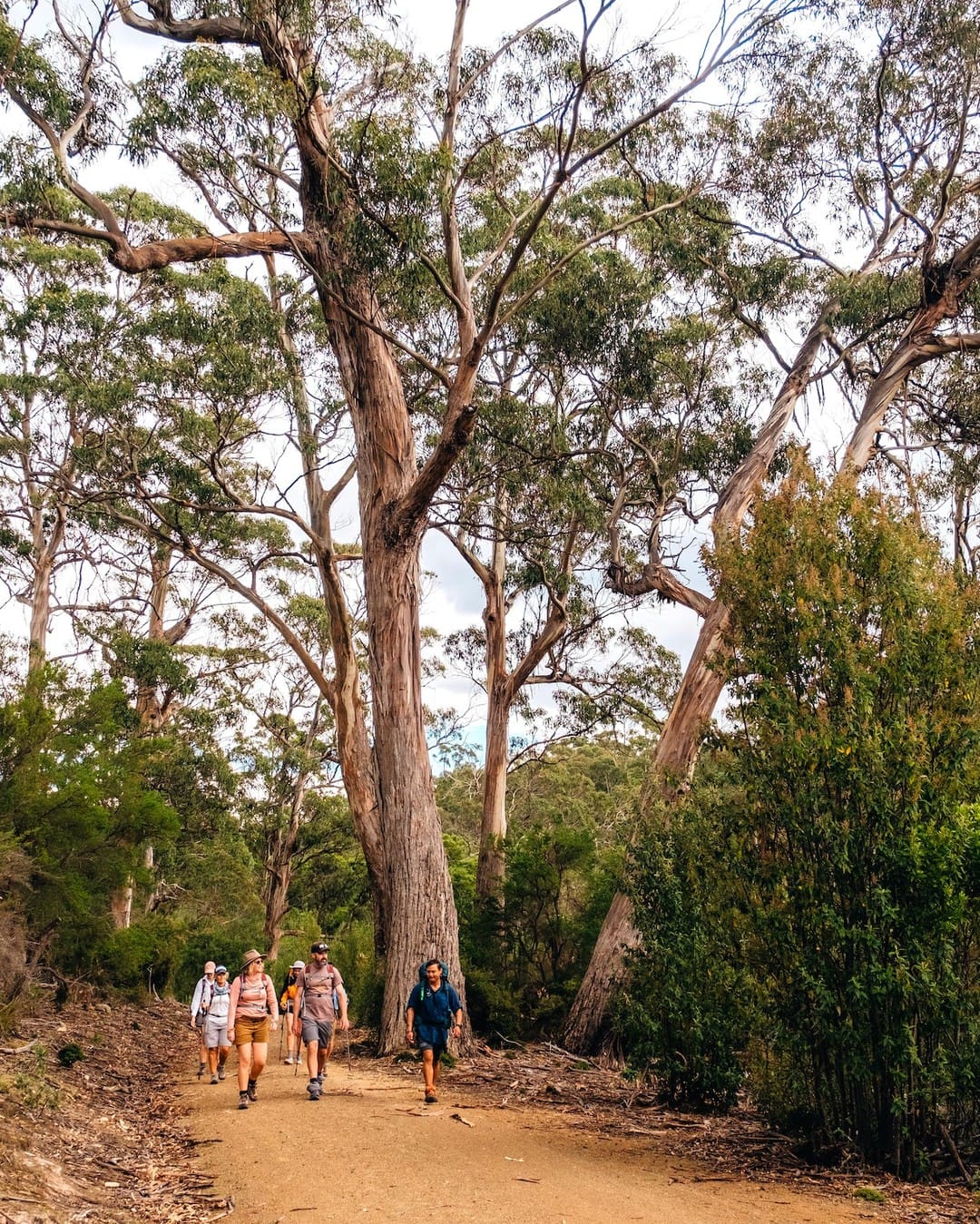
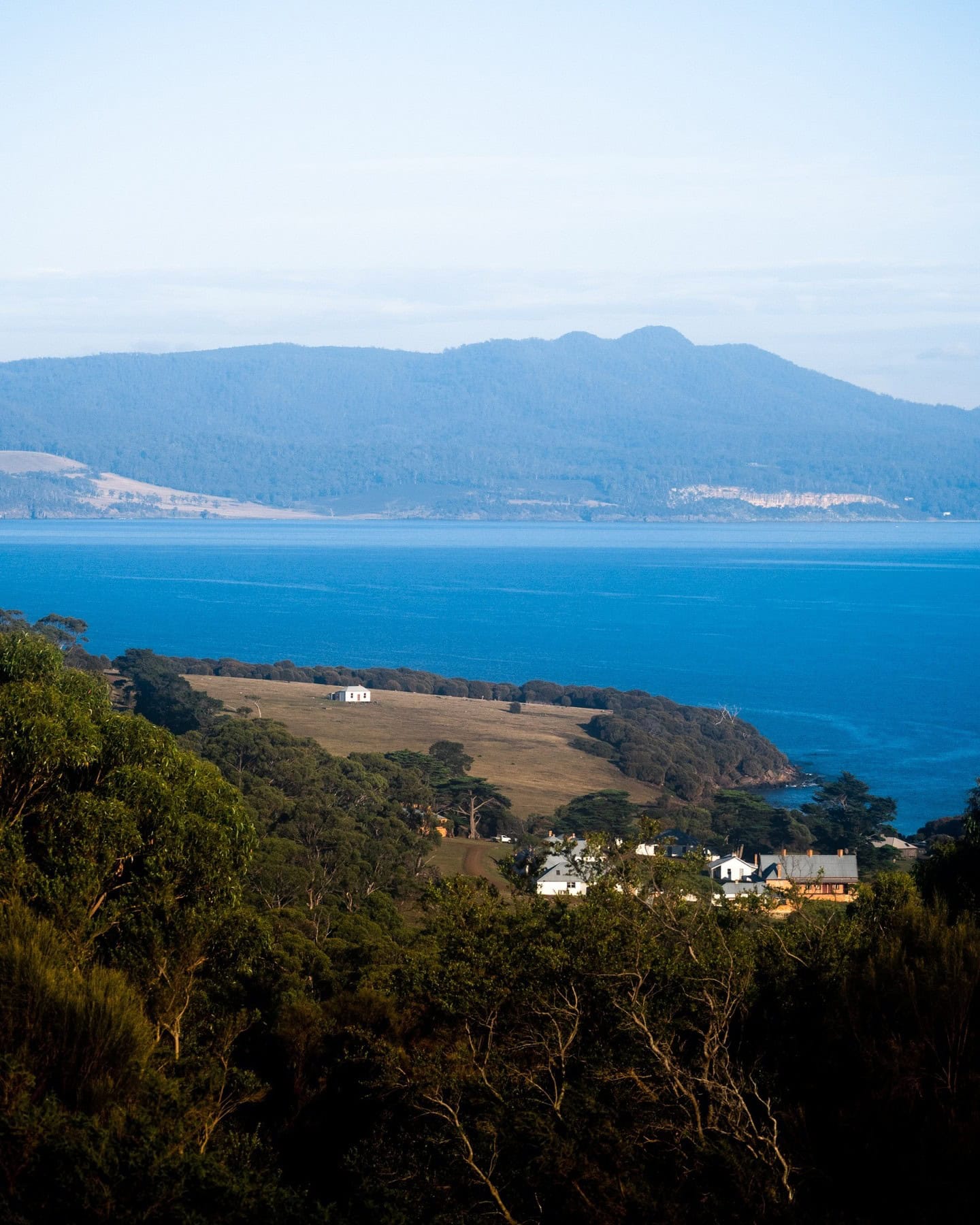
From Darlington, the island tempts in every direction. To the south are the Painted Cliffs, brushed in ochres and swirls like marbled silk. Time it with the tide and the ocean reveals a honeycomb carved over centuries, as though nature had prepared an exhibition of its own. Northward, the Fossil Cliffs drop into a platform packed with ancient shells, limestone still carrying the memory of millennia.
And if the day is clear and your boots steady, Bishop & Clerk will call you upward: eleven kilometres through meadow and boulderfield, ending with a scramble to a summit where the world seems to fall away. On bright days, the Freycinet Peninsula lies in plain sight; on cloudy ones, you find yourself standing in a private cathedral of mist.
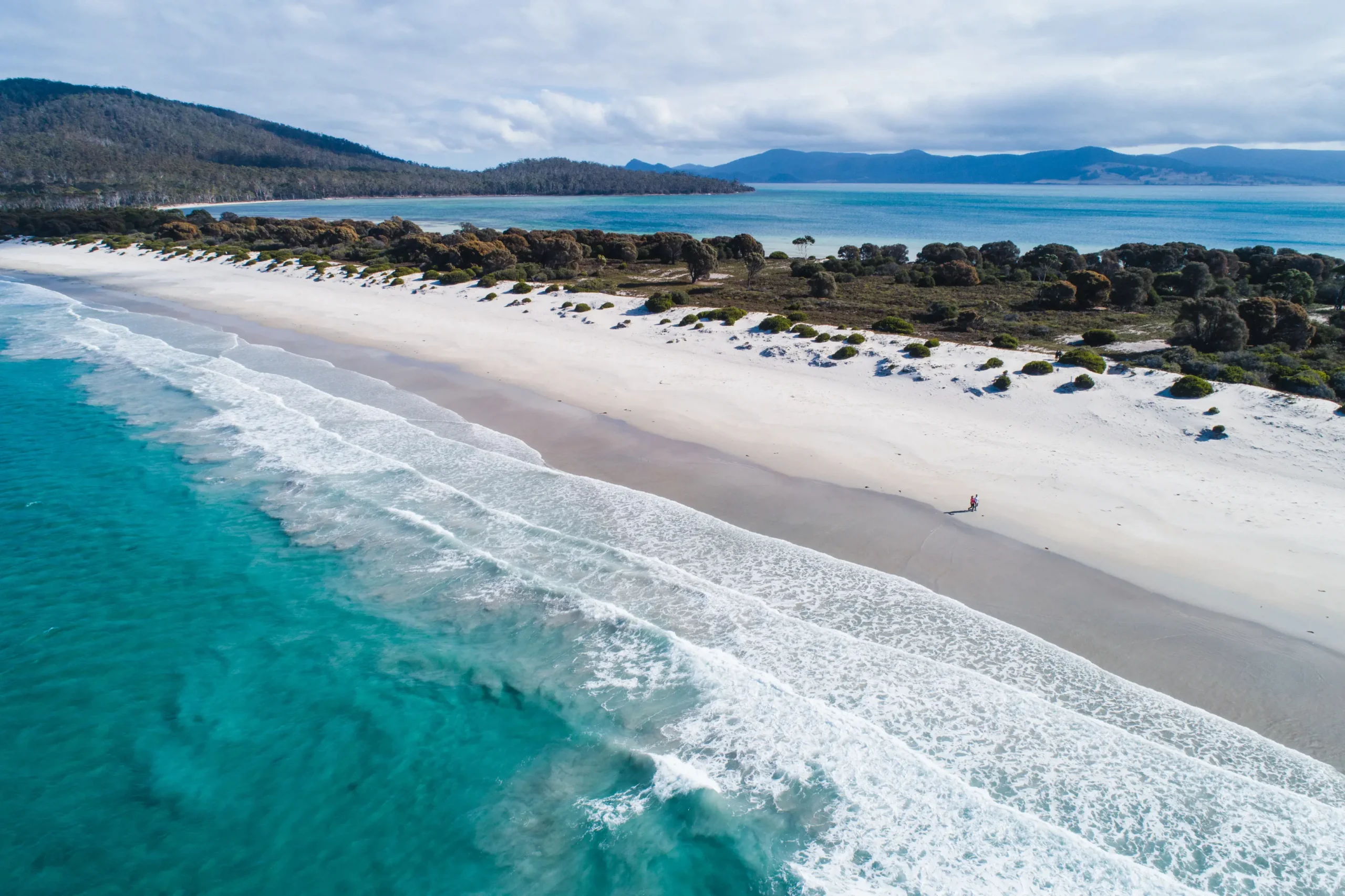
The island is threaded with gentler pleasures too. The Reservoir Circuit winds level through eucalypt woodland, alive with the fluting of green rosellas and the quick dart of pardalotes. Beaches unfurl from Darlington like pale ribbons — perfect for cooling off after a walk or picnicking barefoot in the sand. Hopground Beach, close to the Painted Cliffs, is a favourite for its turquoise shallows, while further afield Four Mile Beach and Shoal Bay promise the rare reward of an entire coastline to yourself.
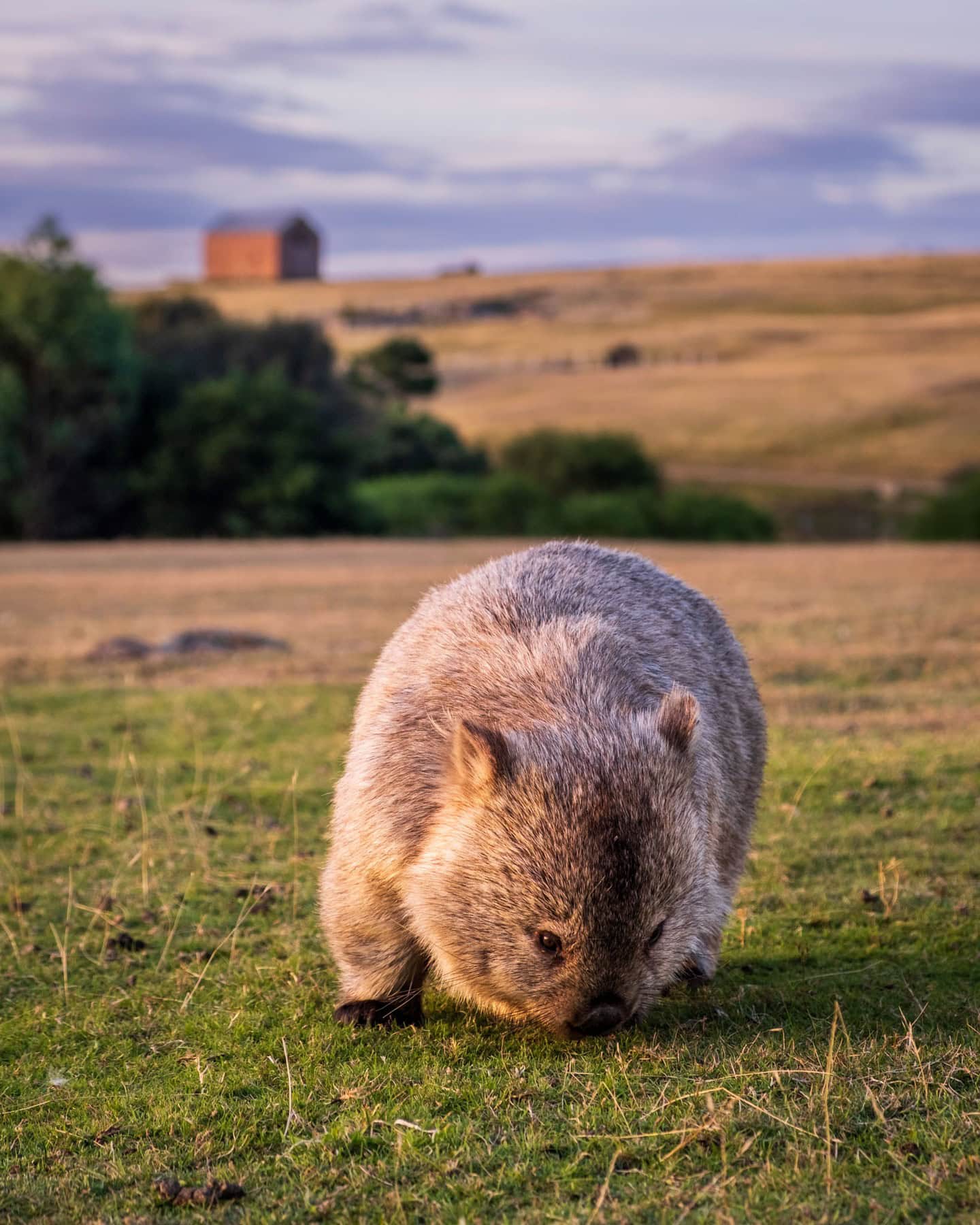
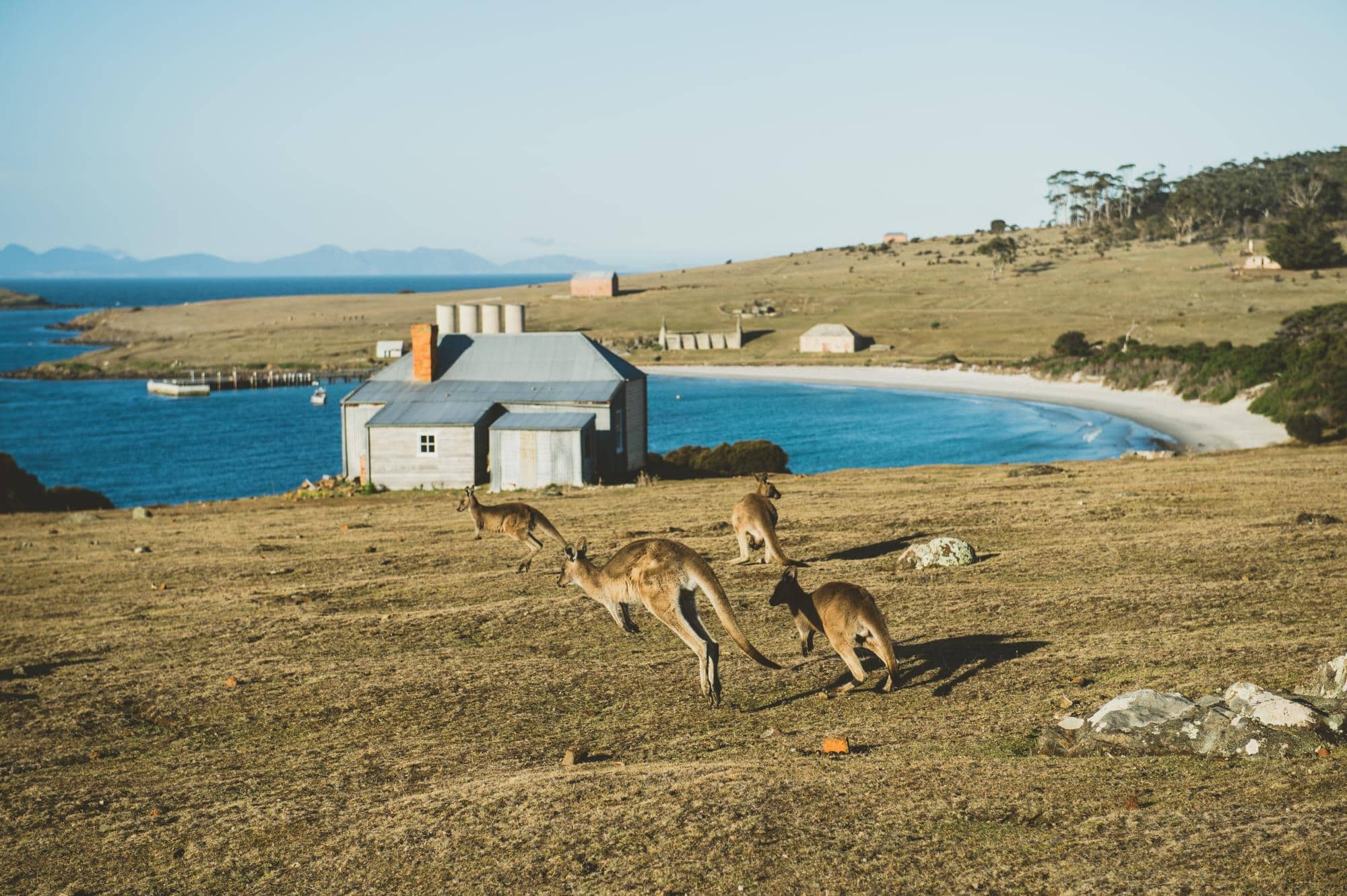
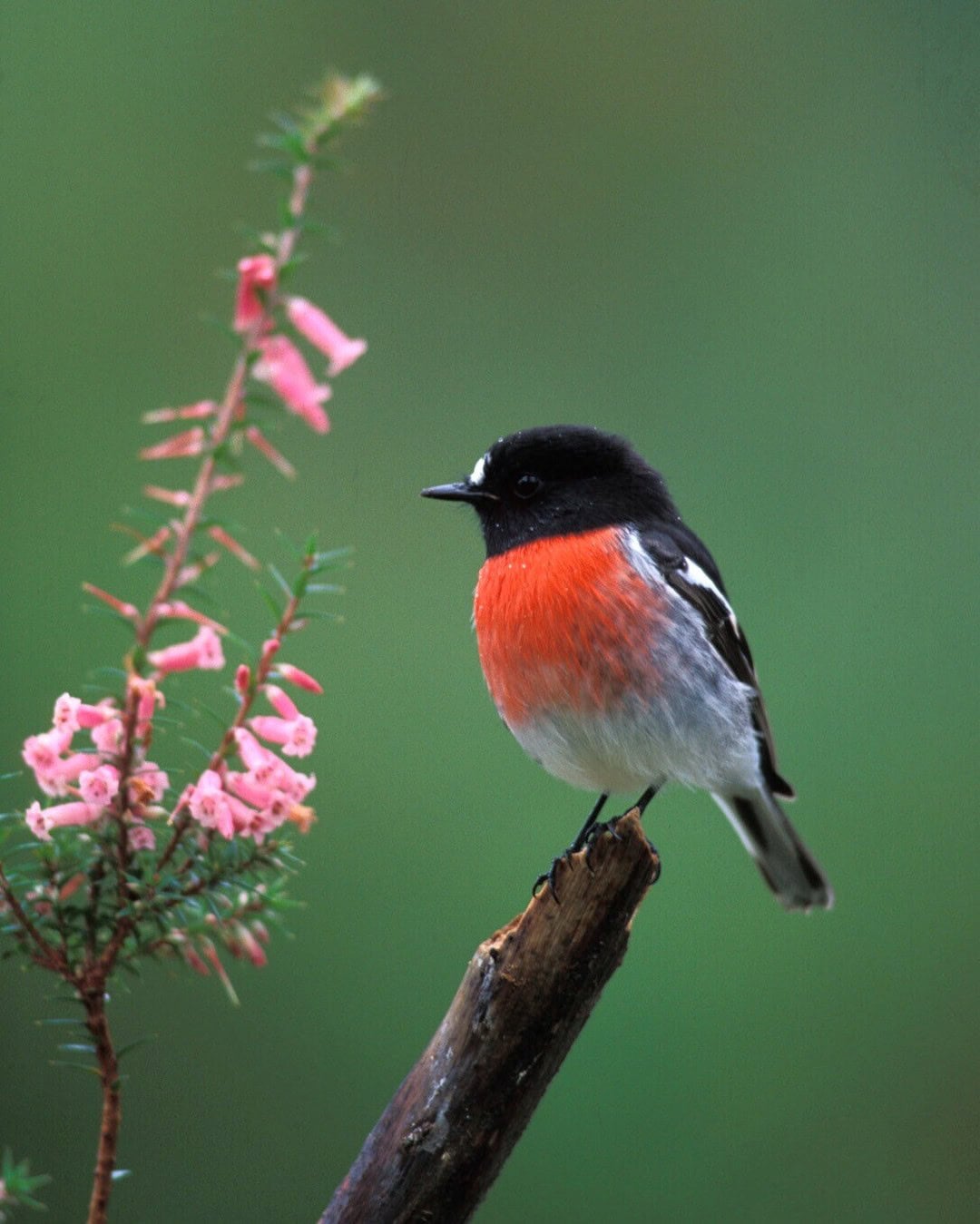
And then there is the company. Maria is often called Tasmania’s Noah’s Ark, and with good reason. Wombats graze across the fields so intent on their feeding they scarcely notice you. Bennett’s wallabies spring from the scrub, forester kangaroos rest in sunlit clearings, and Cape Barren geese honk across the sky. Birdlife abounds: wedge-tailed eagles circle high, hooded plovers dash the tideline, and the endangered forty-spotted pardalote glimmers in the treetops. At night Tasmanian devils prowl the tracks, part of a conservation program that has helped the species endure.
Planning Tips for Maria Island Day Trip
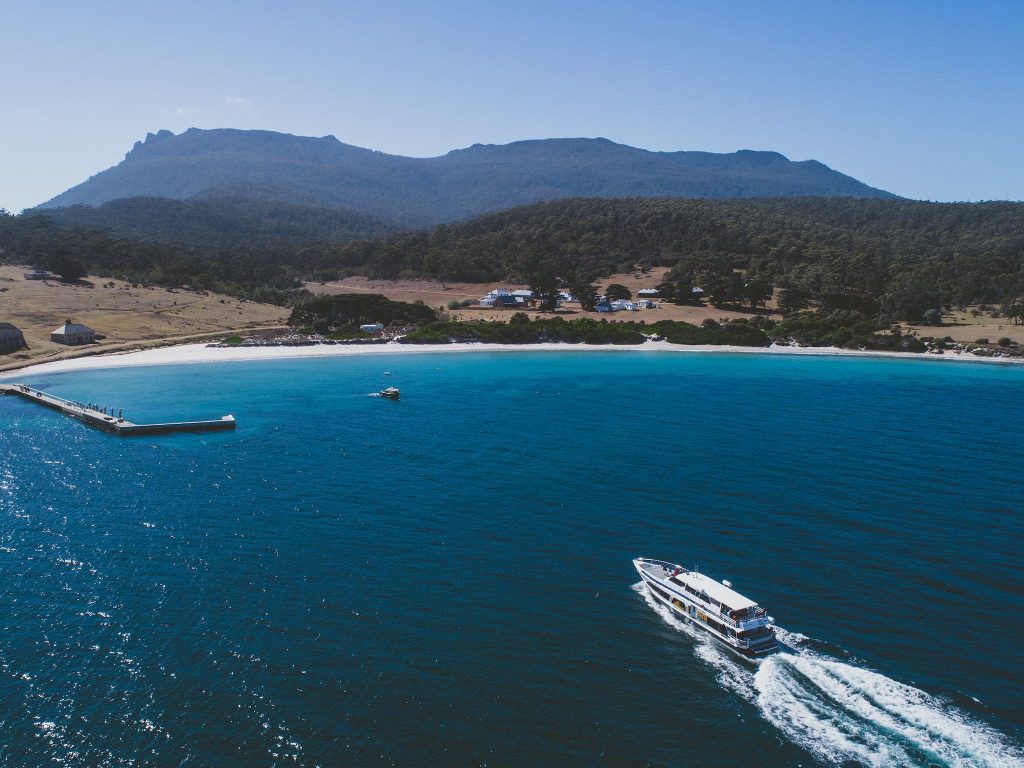
A day on Maria moves with rhythm and restraint. The first ferry out, the last one home, and between them hours to let the island lead. You might climb and swim and still drift back through Darlington’s ruins. You might loop between Fossil Cliffs, Reservoir Circuit and Painted Cliffs, breaking for lunch in the grass. There are no shops, no bins, no cars, and hardly any signal. Bring food, a way to treat water, and the patience to let the island slow you down.
Cycling is another joy here. With no traffic save for rangers, the dirt roads feel like they belong to you. Ride out from Darlington across fields and along coasts, stopping when a wombat ambles across your path, when the cliffs catch fire in afternoon light, when the sea looks too inviting not to swim.
Even with the neatest plan, Maria will rewrite your day. The tide may hold you back from the Painted Cliffs. A wombat might keep you longer than you intended. A cloud may change the mountain’s mood. And that is the spell: time bends here, and the island asks you to bend with it.
Before leaving, pause once more in Darlington. Let the convict walls frame the sea. Let the breeze carry the call of geese overhead. Let the island settle into you. By the time the ferry pulls away and the mainland edges back into view, you’ll know Maria has done what few day trips manage — it has shifted you, quietly and lastingly, into a slower gear you’ll carry long after the wake fades behind you.
Sitchu Tip: Oh, and don’t forget to purchase a Parks Pass, as Maria Island is entirely a national park. You can snag this online or before boarding the ferry from Triabunna.
If Maria Island has cast its spell on you — as it has on us — you may also fall for the boutique stays of the Huon Valley, or be tempted by a road trip between Launceston and Hobart that is every bit as charming.
 Subscribe
Subscribe









 Subscribe
Subscribe


